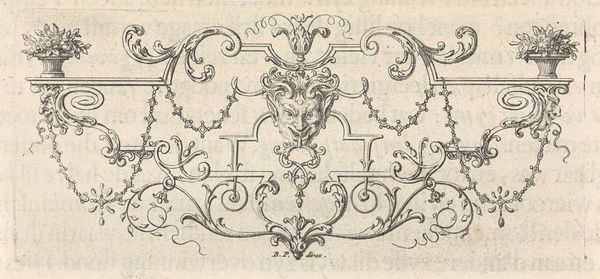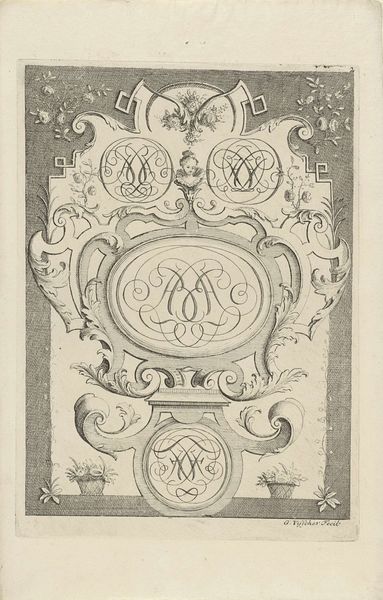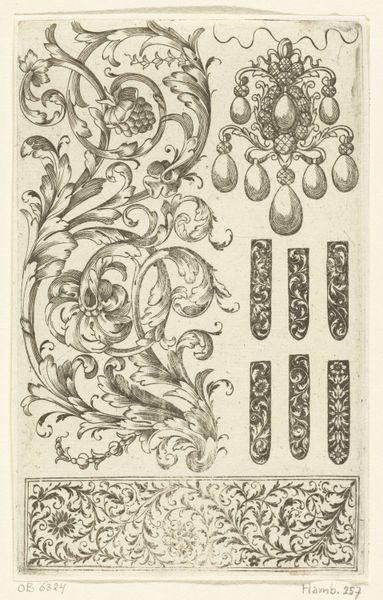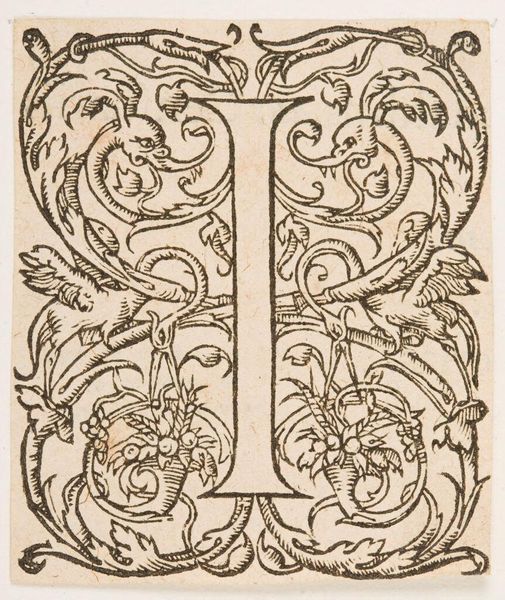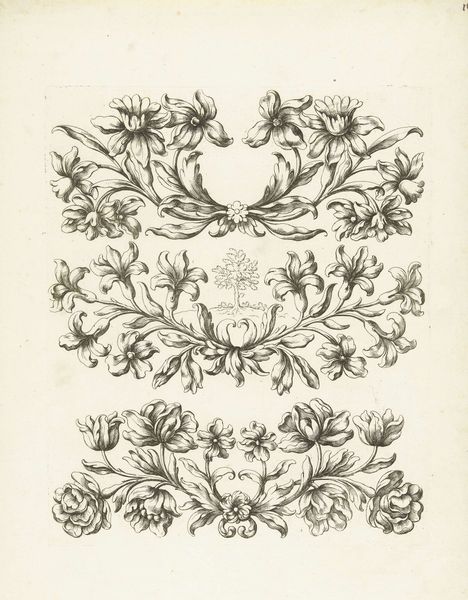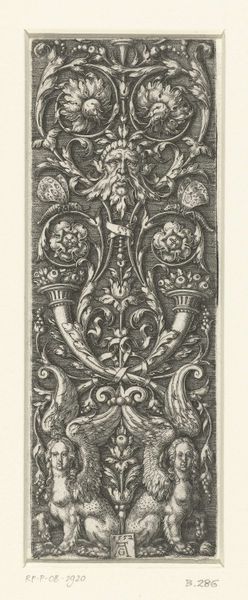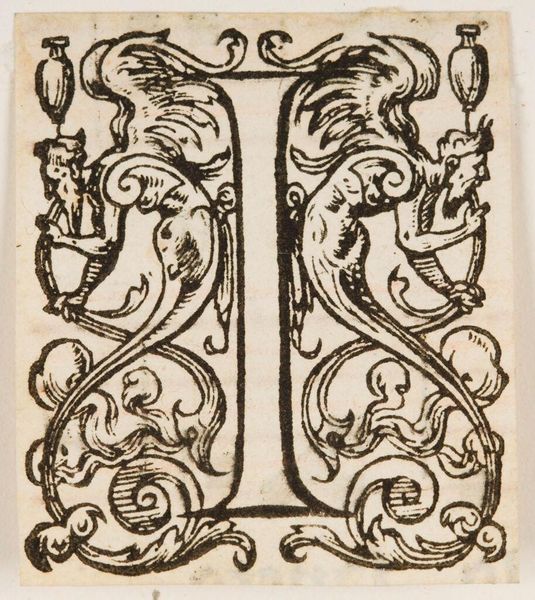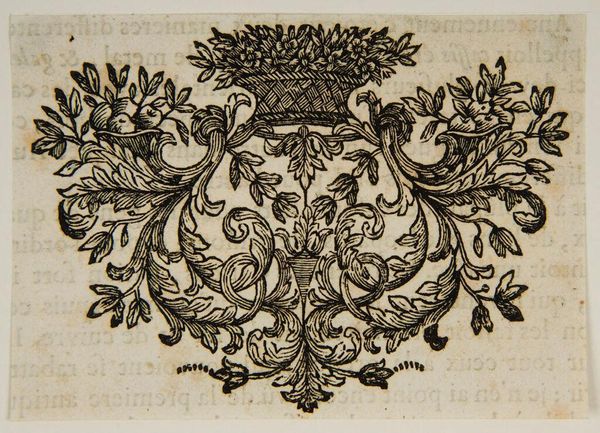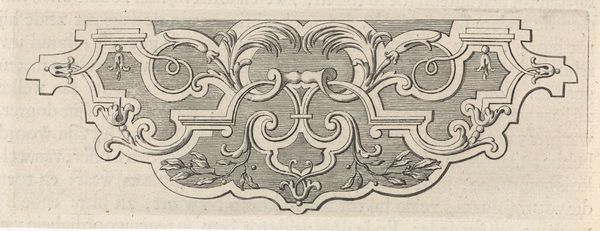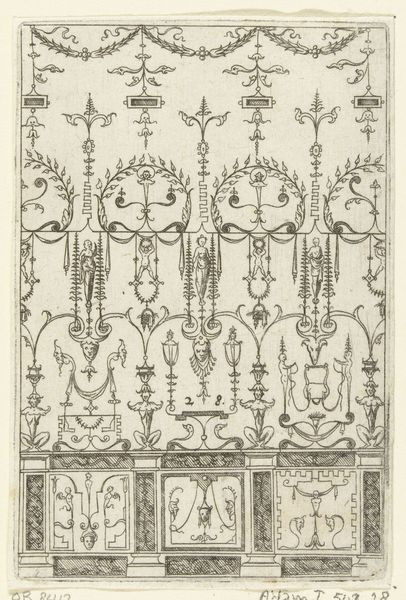
drawing, print, textile, paper, engraving
#
drawing
#
baroque
# print
#
old engraving style
#
textile
#
paper
#
geometric
#
line
#
pen work
#
sketchbook drawing
#
pattern repetition
#
textile design
#
decorative-art
#
imprinted textile
#
layered pattern
#
funky pattern
#
engraving
#
doodle art
#
dotted shading
Dimensions: height 136 mm, width 84 mm
Copyright: Rijks Museum: Open Domain
Editor: Here we have “Twaalf ornamenten,” or “Twelve Ornaments,” a 17th-century engraving by Daniel de Lafeuille, currently held at the Rijksmuseum. What immediately grabs me is the incredible detail in each design, especially considering they're printed on paper. What stands out to you? Curator: I notice the interplay between the artist's skill, the materials used, and the social function of these designs. These weren't meant as “high art” in the modern sense. Think of them as prototypes, patterns available for craftspeople, jewelers, and textile workers. The engraving process itself – the labor involved, the accessibility of prints versus unique objects – that’s what fascinates me. What does mass production do to artistry? Does it democratize it, cheapen it, or both? Editor: That’s a perspective I hadn't considered! It challenges my initial thought of appreciating these solely as artistic expressions, and more like blueprints for functional crafts. So, in a way, we are also observing early forms of design patterns that impact many aspects of craftsmanship during that time? Curator: Exactly! Consider the paper itself, likely relatively cheap and widely available. Engraving allows for replication, for dissemination of these designs to a wider market. This wasn't about a single, precious object but about the *process* of making, and the impact on broader craft production. Are these designs inherently beautiful, or do we project our modern notions of aesthetics onto them? Were these merely functional items sold by a burgeoning industry? Editor: So we move away from notions of art as unique objects made by unique talents, toward thinking about the entire industry of visual and material production, of which "art" is one small component. The image then documents and is also *part* of early manufacturing as distribution networks expanded! Thanks, this conversation completely reshaped how I view this artwork. Curator: Indeed. And that awareness allows for new insight and new ways of reading art's broader relationship to everyday life.
Comments
No comments
Be the first to comment and join the conversation on the ultimate creative platform.
